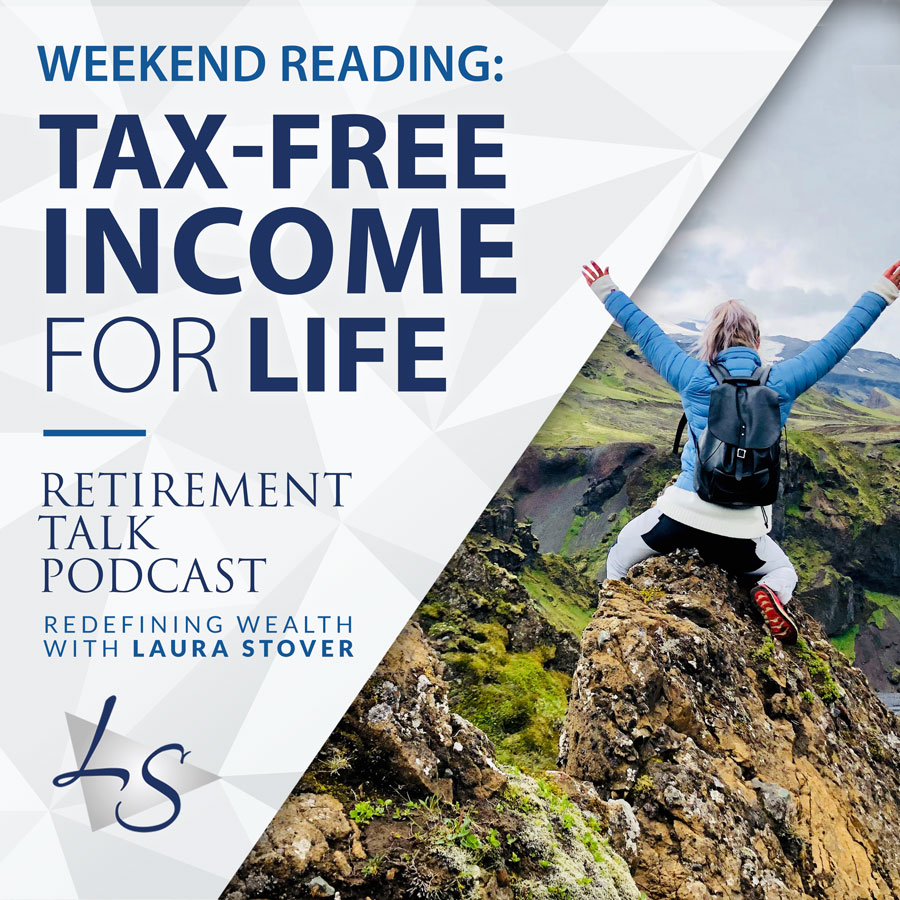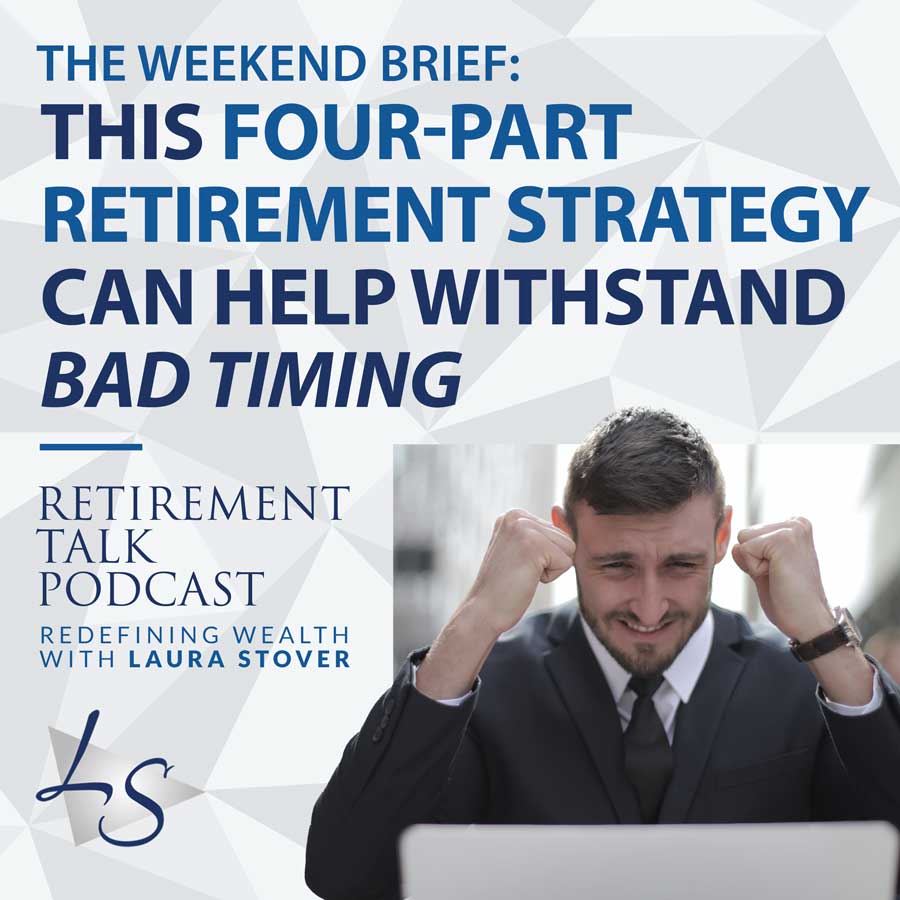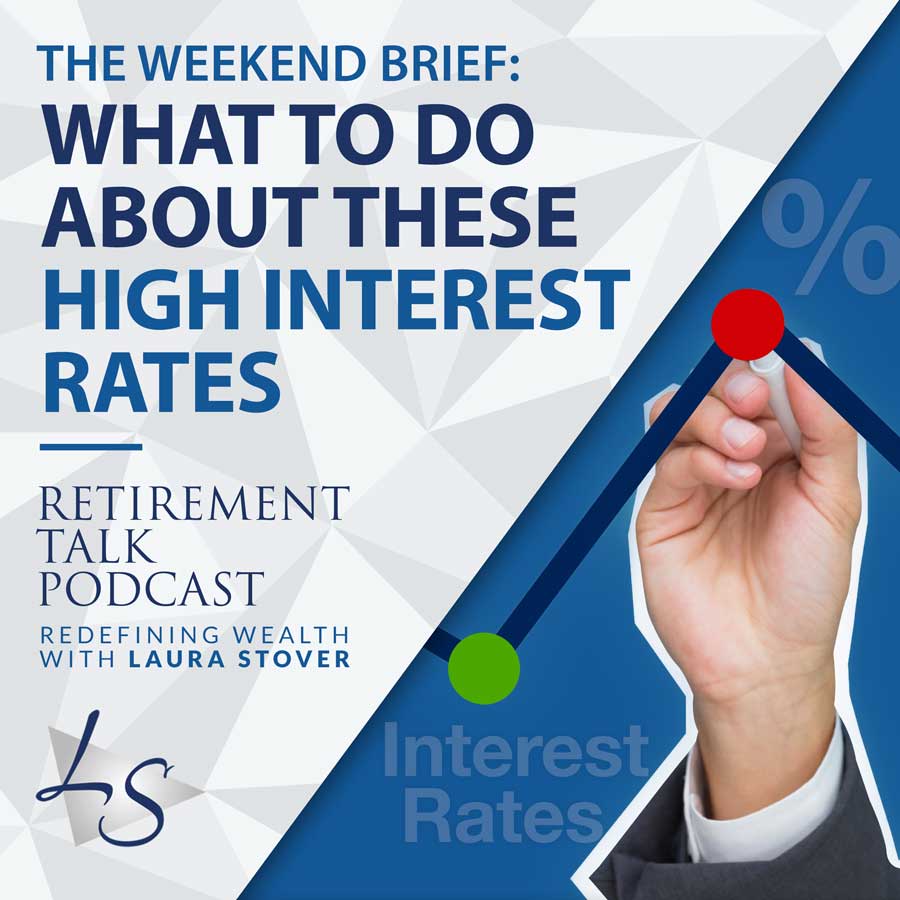As we continue the conversation from last week’s episode, pulling important takeaways from David McKnight’s book, Tax-Free Income for Life, Laura, Michael, and JAG, discuss how the three buckets of tax can impact your investments and retirement. In this episode, they’re also sharing valuable advice by answering a listener’s question about how their investments and legacy are impacted by The Secure Act and Pro-rata Rule.
Listen in as they discuss taxable, tax-deferred, and tax-free investments, along with how important it is to be strategic in your planning for retirement.
Review the book mentioned in today’s show >>
Rate & Review the Podcast on your favorite podcast app!
Sign Up for The Weekend Reading Email to read more on the featured podcast: redefiningwealth.info/weekend-reading
Show Notes
Recap of Last Week’s Episode (:56)
Three Buckets of Tax (2:57)
1. Taxable Bucket
2. Tax-Deferred Bucket
3. Tax-Free Bucket
Investing Young (6:12)
Leaving a Legacy & Impact of the Secure Act (7:12)
Pro-Rata Rule with Beneficiary IRA (9:18)
Traditional IRA vs Roth IRA (10:55)
Backdoor Roth IRA Conversion (12:23)
Pros (12:43)
Cons (13:07)
Strategic Income Planning (15:44)
Healthcare Planning in Retirement (16:06)
How to get one of our five free copies of Tax-Free Income for Life:
- Follow the podcast and leave a review on Apple Podcast.
- Send an email to [email protected] or text TAX GUIDE to 474747 with your apple username and mailing address.
Traditional Policies (22:15)
Current Jobs & Tax Cuts Act (23:18)
Balance in Tax Buckets (23:45)
Links
Weekend Read: redefiningwealth.info/weekend-reading
Text TAX GUIDE to 474747
Tax-Free Income for Life
Listen & Subscribe
JAG:
Welcome to retirement talk, the redefining wealth show, specifically for pre-retirees and retirees to help you better understand and navigate and educate. During these financial times, we’re here to discuss thoughts and ideas with some of today’s foremost experts in the field of finance and retirement, as well as discuss trending topics that could impact your bottom line. These discussions can help you make better financial decisions and be informed so you can live the lifestyle you imagine and make better financial choices. Laura Stover is a registered financial consultant and CEO of Ellis Wealth Management, as well as founder and owner of LS tax, a consulting firm. She’s been featured in Forbes, CNBC and the wall street journal. I’m John JAG Gay. Here is your host for retirement talk, redefining wealth, Laura Stover with certified financial planner. Michael Wallen. Welcome both to the show.
Laura:
Hello. Hello. Hello. We are continuing our discussion on our favorite topic. Well, it’s not really my favorite, but one of the most important topics that we talk about here on retirement talk is the discussion of tax planning, in retirement to be more specific. Now, if you did not check out last week’s show, be sure to go over to redefiningwealth.info. There’s an archive of all our past shows over there in case you missed it. It’s episode 65 and we laid the foundation about the crisis that country could be facing over the next decade in terms of how astounding this national deficit is, it’s growing. We just passed a very large spending bill on infrastructure. That’s 550 trillion over the next five years. And we want to talk about things that you can do today. There’s not a lot we can control in life, but there’s some things that we can better position ourselves for, to probably navigate through some of the tailwinds that could be around the corner.
Laura:
Because the problem, the problem is most people have saved most of their retirement nest egg in tax deferred accounts. So we’re going to hit that up today. Talk all about that. And we’re basing our show this week again on David McKnight’s best-selling book, tax-free income for life.
JAG:
If for complete show notes, where to check out the first part of this series, as Laura said, you go to redefiningwealth.info, check out our previous episode 65. It’s also part of the weekend reading series that goes out each Friday. You can sign up each and every Friday to receive this at redefiningwealth.info.
Michael:
Laura, in episode 65, essentially we laid out the three tax buckets and everyone’s situation is different. And as we talked about in episode 65, there is no cookie cutter approach as everyone circumstances vary, but it is critical to understand that no matter where or how your money is invested, it will be in one of those three buckets.
JAG:
And Michael, Laura has taught me these three buckets, a taxable, anything you receive for a 10.99 for bank accounts, non-qualified mutual funds, CD savings. It’s all taxable. It’s basically an IOU to the IRS. That being the first bucket.
Michael:
Then JAG, you have a tax deferred bucket. For most Americans, your wealth is likely in this bucket. It often houses your 401k, your 403B or an IRA. The third bucket is the tax-free bucket. Those are tax-free Roth IRAs, HSA, sometimes municipal bonds and life insurance when properly set up. But our goal is to fully make the contributions into the Roth IRA accounts. And then once we fully maximize those, look at funding and maximizing out an HSA account, as well as a properly designed life insurance policy.
Laura:
One of the things with municipal bonds, even though Michael, they are technically tax-free on the federal level. Sometimes it can bump people’s social security thresholds and create taxation depending on the threshold of different sources of income. And then people can be taxed as high as 85% from miscellaneous income or those CDs and savings accounts, even though they’re not paying any interest rates. So that’s why working with a CPA team, the investment advisor, the certified financial planner, it requires everybody to help design and strategically align and making sure clients have the exact right balance in each bucket, taxable tax deferred tax free. So no matter where you invest your money, having this as part of your overall income plan, it’s going to make a tremendous difference down the road when we’re likely to be in much, much higher tax brackets down the road. If David McKnight, ed Slott, the nation’s top IRA expert, David Walker, the seventh comptroller of the United States government.
Laura:
He served under two different presidents, but on both sides of the aisle, many others think we’re going to be in some very hefty tax brackets within that 10 year timeframe due to the debt, due to a number of reasons. And incidentally ed Slott has a fantastic book as well. The new retirement savings time bomb. It’s about how can you diversify and manage tax risk now, so that we can achieve financial independence and have early retirement dreams and sustain retirement?
JAG:
Yeah Laura, ed is a big opponent of those Roth accounts because they’re an easy, widely available solution. He says he has a traditional IRA and in the traditional IRA, that balance $0 and 0 cents.
Laura:
Well, hee advises the younger listeners, someone like you JAG as should be investing robustly.
JAG:
Thank you for calling the young Laura.
Laura:
You are young and fun. That’s why we want, that’s what you’re bring the life to the show buddy. And so yes, there are so many people that are their broker tells them, oh, you should open a Roth up. Well, they open the account, but they’re not systematically funding it. They’re not focused on growing that account. So Ed is definitely the guy on that. He advises that younger listeners, regardless of your salary, focus exclusively on funding those Roth accounts and start some momentum early in your investing career with the right types of accounts. And he says that while your focus may shift with age, it’s a good idea to have some funds in tax-free vehicles to hedge against these potential tax increases.
JAG:
Laura, we actually had a listener question from our previous episode, episode 65. It’s from Monica Lee and Kevin in Los Angeles. Monica says I’m concerned with the new secure act that went into effect December, 2019. I have a beneficiary IRA that I inherited from my father, and I want to leave a legacy to my son. He’s 12 right now. But with the secure act saying, you need to drain the IRA within 10 years. If I wanted to send a gift to my son later in life, does that mean it’s smarter to put more funds into a Roth instead?
Laura:
Well, first Monica Lee and Kevin, thank you. And we’re thinking so many people have contacted us. If you have a question, be sure to go to redefiningwealth@info. You can write in the check box. You can email us @infoatlswealthmanagement.com. The answer to your question Monica, is a simple yes, yes and yes. You should be investing in a Roth. Now we’d like to know a little more of your overall financial picture. There are some income limits. We didn’t have any more information than this question. There’s caps based on you and your husband’s income. And we don’t have your ages, but taxes will be the single biggest factor that really is going to separate people from their retirement dreams and monumental legislation and recent years such as the secure act, it really did create a major overhaul of our tax system. We’re looking potentially for a secure act 2.0 before the year’s over. That’s yet to be seen, but it’s affecting virtually everyone in some way with countless implications. So right, when you finally make it to retirement, there is looming uncertainty about how much money you own and actually how much you’re going to keep.
Laura:
So I would advise you as some of these strategies, we’re talking about shifting from tax deferred and taxable to the tax-free, that’s why we’re sitting down with an income planning specialist, a team with a CPA is going to be very, very helpful with your planning.
JAG:
Is actually a final question here in the email on how to break it up and not hit you with all of it at once. But she says, lastly, I’m digging into the pro-rata rule and I’m confused about how it works. Does having a beneficiary IRA matter if you want to do in plan 401k conversions?
Michael:
JAG, that’s the high heat right there. That’s some advanced strategies. And let me kind of unpack this a little bit here. What we consider that or often call that is the backdoor Roth IRA pro-rata rule. It’s a little known, but very highly important regulation that has significant implications on anyone executing this type of conversion. And what this means and when you hear the backdoor Roth IRA, it stipulates how the IRAs will treat pre-tax and after tax contributions, when a taxpayer executes the Roth conversion. Creating an IRA, and for all the listeners here that stands for individual retirement arrangements, and those are either in an annuity or an account. And it’s the most popular strategies used while saving or for retirement. So once we understand, we’ve got this account that is sitting over here, JAG, most IRAs are going to fall into one or two categories.
Michael:
It’s either going to be a traditional IRA, or it’s going to be the Roth IRA. In this situation, we’re wanting to take money from that traditional IRA or 401k. And we’re wanting to move that over into the taxable position of a Roth. So as a recap, one of the primary differences between a traditional IRA and a Roth IRA is when you need to pay the taxes. We in a traditional IRA or 401k, an individual taxes are typically fully or partially deferred at the time of contribution and will be paid later on when withdrawals are taken. Tax deferral is not always the case for high income earners. And that is what this backdoor Roth IRA conversion alludes to. Things to consider are income levels, marriage status, or whether or not this individual is contributing to an employer retirement plan. Based on this question, they’re telling us that they are in currently a 401k, or if they’ve retired and looking to move it into a Roth from a traditional IRA, this is how these rules are going to come in.
Michael:
With a Roth IRA, different than the traditional IRA, individual taxes will be paid up front rather than at withdrawal. So let’s unpack this. Depending on your life and career circumstances, you may want to consider making a full or partial Roth conversion. When doing this all or some of the funds from one of the retirement accounts will be converted into the Roth. The conversion can create an immediate tax obligation that needs to really be considered. That has some major implications. And I’ll talk about that in just a second. The backdoor Roth IRA conversion is a method used by high income earners to pass the Roth IRA income limits. Those are established by the IRAs. Each years, those change. So we highly recommend that when you’re looking to do a Roth conversion, you are taking a look at what those limits are. So the pros, when you consider doing this approach, a couple of reasons to create this topic conversion might be too, if you’re expecting for higher future income, sudden wealth, a new financial strategy, changing family structures.
Michael:
Those are some of those things to consider. The issue that you should consider a major cone of this is, if you’re doing this type of conversion and the taxes are having to be paid out of that retirement account, you’re going to impact your investing power. But when those dollars are converted from the 401k or the IRA over into it, and this is in most cases as a high income earner where they have both taxable and after tax contributions in their IRA or in their 401k. When they do the conversion, there is going to be a pro-rata a mail proportionately for each one to determine what the taxes are. So for instance, if there is a hundred $100,000 in the 401k and $80,000 of that is pre-tax dollars and $20,000 of the funds is after tax. When you do the conversion, the amount you move over into the Roth, either a full or partial will be based up on that same pro-rata percentage when determining the taxes.
Michael:
And this again is most of the time when you’re dealing with high income earners that will have a traditional IRA or a 401k where they have went beyond the limits of what is allowed for tax deferral and made additional contributions that were after tax. When you do the Roth conversion, that pro-rata rule is going to stay in place. And so that would be an 80-20 on the conversion of how much would be taxable and what portion would be able to come over non taxable. And the reason the IRAs does this is, they don’t allow an individual to cherry pick. So if I was doing a conversion, I can’t just do the 20%. I’ve already paid the taxes off and then leave the other 80% in the taxable account. That’s the reason they do it. If I was doing 20,0000, 16,000 would be taxable and the other 4,000 would still remain tax-free.
Laura:
Well, now we’re talking about having the right balance in each tax bucket. And this is really where strategic planning is necessary. And again, just to recap, a little bit of what you just explained because of Monica Lee’s question, you never want to pay the tax ideally out of the account being converted. That defeats the whole compound interesting over time.
Michael:
Absolutely.
Laura:
So again, this is where strategic planning, the income planning process, performing the due diligence with each pillar. That’s why I created the redefining wealth process and identifying where the income’s going to be needed and for what purpose. And that’s another great segue for another angle to identify when we’re looking at these pillars of the redefining wealth process, not only is the tax pillar, a very complex and very critical to have strategic planning around. But we also look at the healthcare pillar and believe it or not, that’s also a big ticket item. I think over the next 10 years, I don’t see any improvements when we’re in a pandemic when we’re seeing rising costs and when we’re looking at people’s incomes in retirement is what we’re talking about. I mean, that’s the bottom line and that’s why everyone needs a written income plan. And if we just look, the statistics are there. If you’re 65 years of age or older, chances are 70% of people that age will need some type of long-term care. That’s just a fact.
Laura:
So from a tax perspective, proper planning could reposition an amount of your assets like we’re talking about here today, Michael, into a specific strategy, whether that be life insurance, the HSA, the Roth, combinations of all, depending on your unique circumstances. But that could strategically cover some of the expenditures that we encounter with long-term care costs. And you could receive that income, potentially income tax free. And you may have the option to purchase lifetime coverage to have an unlimited benefit. I don’t know about you. I have no crystal ball. I do not know how long I would need coverage. If I had a long-term care incident occur, three years is the average, but I don’t want to just pay for something and wonder if I need it for five years or six years. So, we look at a number of options that cover those questions, because people are in fact living longer, and you need to make sure your money lasts as long as you do.
Michael:
You know, Laura, when you mentioned long-term care, I’m sure several of the listeners probably cringed or pulled back, or even may have had the response, Oh, that’s never going to happen to me. But just like you said, 70% of individuals, 65 and older are going to need some type of coverage protection or benefit from long-term care. So if we know that we’re going to need this, the approach is how can we invest or put our dollars into a vehicle that’s going to be available when we need it and is going to be relevant during my retirement years. And many times when we sit down with clients, we don’t use the traditional long-term care as much today, as what we use what we call a hybrid plan. And that can either be based upon an annuity structure or on a life insurance structure, where there’s a cash value growth inside of the plan.
Michael:
And those, the cash value growth inside of it is actually paying the annual premiums in it. But those type of structures are designed to be kind of like a Swiss army knife. If you live too long, it’s going to be there to provide long-term care benefits that could be home care, all the way through convalescent care. Or if you die too soon, it would pay out in the form of a death benefit. Now, one of the things that you should also consider is that how would you pay for your coverage in the event? You didn’t have long-term care. Planning for LTC or planning for a loss of health or a declining health is asset protection. For most people, if you don’t have proper coverage, your investment account, your retirement accounts are going to be drained down to a minimal level before you’re able to go on to what would be called Medical provisions.
Michael:
And so asset protection is using these type of insurance plans where you’re pushing the burden of those costs over to the insurance company and protecting the assets you have. So those can be left to your spouse or your heirs. And it is just proper prudent planning to structure these types of plans and many of these plans has that extra bonus is, if you don’t use it, or if you say that in the future, you’re not going to use this type of plan. There’s a 100% return of premium. Again, it’s setting down with the proper planner and as we’ve do to LS wealth and our strategies, we look at where they are today and making sure that we put the best strategy in place to meet their goals today, as well as in the future.
JAG:
This is a great time to say that if you’re enjoying the show with Laura Stover and Michael Wallen, and we’d like a complimentary copy of best selling author, Dave McKnight’s most recent book, just two things real quick. Follow the podcast in apple podcasts and leave an honest rating and review over on apple podcasts. And then just send us an email [email protected] with the apple username you use. Leave that review and send us your mailing address. If you do that, we’ll ship you the book for free. It’s really that easy or just text tax guide to 474747 with your email, name and address. Limit one book per household, ideally for age 45 plus. You can also book a strategy session, speak with Laura and Michael personally, just go to redefiningwealth.info and click schedule review, walk through the redefining wealth process virtually by phone or in person. Subscribe to the weekend, read, receive four articles that will come straight to your inbox each and every Friday. Now about your retirement talk, the redefining wealth show with Laura Stover and Michael Wallen.
Laura:
And before the break Michael, we were talking about long-term care and the need to plan for it. And I hear some people cringe, oh, I don’t want nothing to do with life insurance. I want that part out. I just want the long-term care. Well, one of the beauties about the hybrid policies, now we can look at traditional policies. But if you don’t use the traditional policy, what happens? It’s gone, right?
Michael:
You lose it.
Laura:
I wonder if you’re in that 30% and the number that in the rare instance, you would never need it. And the other big factor that we have seen over the years is what Michael, skyrocketing premiums later down the road, right at the point in time where the client, maybe they’re in their 80’s now. And the premiums are just through the roof at this point. So again, going through all of the strategies, making sure the premium is level, making sure it’s paying for a lifetime benefit.
Laura:
All of these things are vitally important. And with that said, it’s very unlikely that we are going to be in lower tax brackets during retirement. So the closer we get to that 2029, number 2030, the less likely, we know because of all the reasons we’ve stated on the previous show. And today taxes are likely going up. And we know that the current jobs and tax cuts act, that’s going to expire anyhow in 2026. And when you look at that time horizon, it makes the case that tax rates will likely be higher. We’re marching into a period of a lot of uncertainty. And I don’t think that both is well for a lot of people in the majority of their money. Again, now we’re talking that tax deferred bucket. Let’s just talk about having the right balance because some strategies that you can plan and maybe how you should view those tax buckets.
Michael:
Laura, there is an ideal balance to have in your first two buckets, in a rising tax rate environment. Your taxable bucket should contain around, say six months worth of expenses, your emergency fund. And your tax deferred bucket balance should be low enough that RMDs are equal to, or less than your standard deduction, as well as not calls social security, taxation.
Laura:
And anything above and beyond the ideal balance in those first two buckets should in my view and your view too I think, is systematically repositioned to tax-free and preferably you don’t do it all at once. You do just enough of the heavy lifting, so that some of this shifting is done before, or by 2026 and anything with the word raw. And it is your best friend. And these vehicles give you the ability to shift nearly unlimited money from tax deferred to tax free. So, remember going through making sure that there’s a strategy in place in terms of how much should you convert each year. Those are things that our team can answer and help you with. All types of questions, keep sending them into the show and make sure that you know your number.
Laura:
There’s not a magic number in terms of how much you should be shifting each year. And you really need to sit down with an income planning team and make sure that those retirement dollars, you need to spend them in the most tax efficient way possible. Never just go it alone and try to figure some of this out. Retirement planning is more than just picking stocks. It’s more than just picking the winner. That’s part of it, but it is much more encompassing. And I think taxes and the topic of taxes are a major pillar to address with your overall financial plan.
Michael:
In closing comments here on my part, Laura and JAG, I would just say that there have been so many changes that have been introduced over this last year. Whether it is dealing with IRAs, whether it’s dealing with how you distribute your 401k, we have changed the way that individuals or beneficiaries are able to receive the money. In the past, we were able to distribute those distributions from those plans over the lifetime of the beneficiary. As Monica Lee asked a question about having a beneficiary IRA and how that’s going to distribute over her beneficiary’s lifetime. In the past, we could have spread that over an individual at 12 years old and be able to spread that out over their lifetime. But now, as we’re looking at beneficiaries, it is a 10 year distribution. So I highly encourage any of the listeners, if you’re looking at planning and you want to have your strategies in place, come in and sit down with Ellis wealth. Give us a call. Let us evaluate where you are today. Identified the objectives, goals, and the best strategy to get you to the most successful solution in the future.
JAG:
Visit redefiningwealth.info to schedule a redefining wealth strategy review. Receive a step-by-step walk through to get you to a 0% tax bracket. Go to redefiningwealth.info and click schedule review. Redefining wealth is a registered trademark of Ellis wealth management. Investing involves risk, including the potential loss of principal. Any references to protection, safety, or lifetime income generally refer to fixed insurance products, never securities or investments. Insurance guarantees are backed by the financial strength and claims paying abilities of the issuing carrier. This show is intended for informational purposes only. It is not intended to be used as the sole basis for financial decisions, nor should it be construed as advice designed to meet the particular needs of an individual situation.
JAG:
LS Wealth Management LLCs, our pitch offer, and no statement made during this show so constitute tax or legal advice. The firm is not affiliated with or endorsed by the US government or any governmental agency. The information and opinions contained herein provided by third parties have been obtained from sources, believed to be reliable, but accuracy and completeness cannot be guaranteed by LS Wealth Management, LLC. Investment advisory services offered through optimized advisory services and SEC registered investment advisor. LS Wealth Management is a separate entity.












